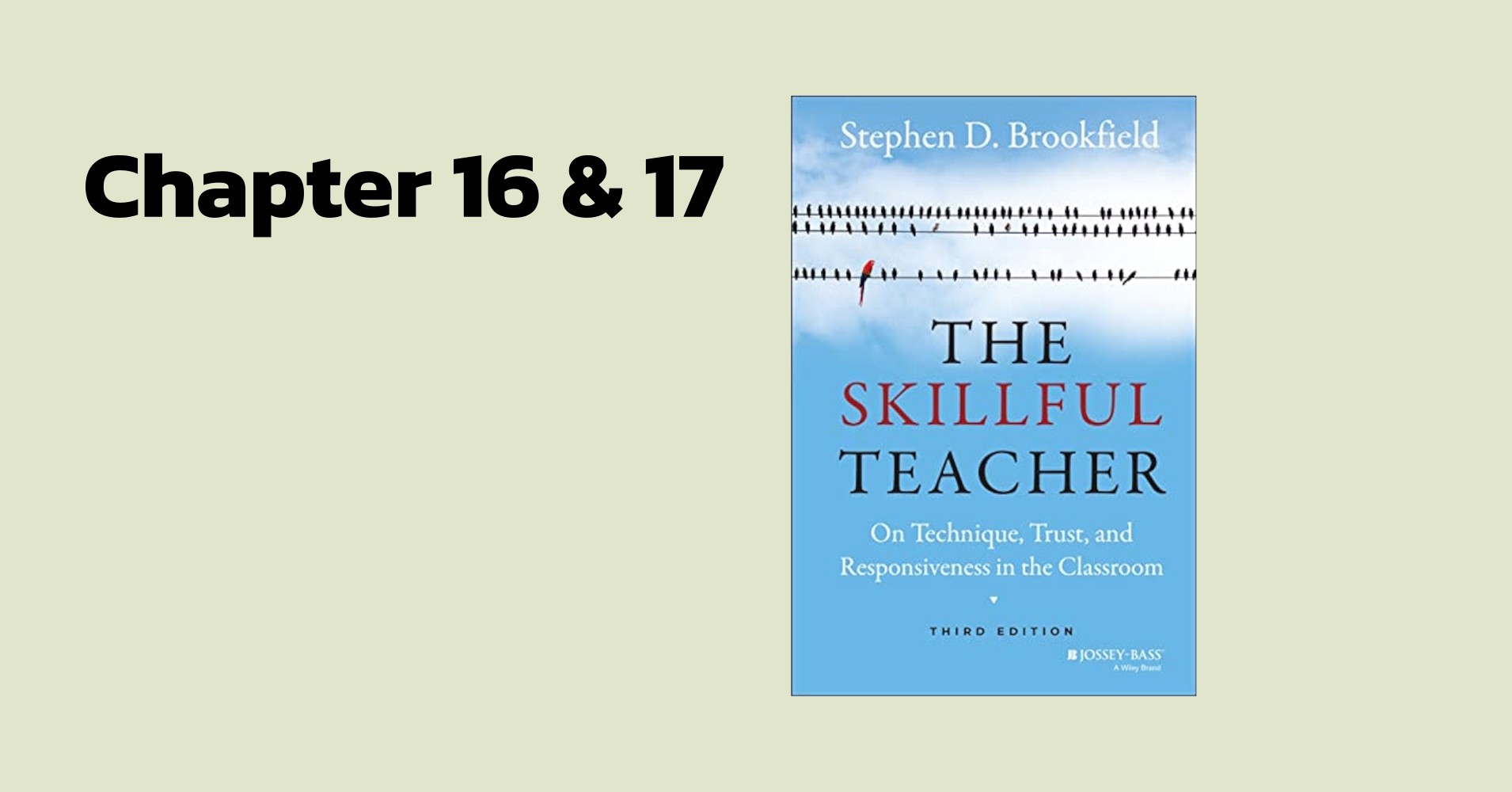Brookfield Chapter 17: Responding to Student's Resistance to Learning
Understanding resistance, unlocking potential

The text discusses strategies for overcoming resistance to learning, as outlined in Stephen’s book “The Skillful Teacher”. Resistance to learning can be a significant obstacle in the teaching process, and understanding its causes is key to addressing it. The chapter highlights the importance of getting students involved in the learning process, using a variety of teaching methods, and creating a receptive state for learning.
Key Strategies for Addressing Resistance to Learning
- Sort out the causes of resistance
- Determine if the resistance is justified
- Research students’ backgrounds and cultural values
- Involve former resisters in the learning process
- Model desired behavior and discussions
- Involve students in educational planning
- Use a variety of teaching methods and approaches
- Assess learning incrementally
- Ensure intentions are clearly understood
- Build a case for learning
- Create situations in which students can succeed
- Avoid pushing too fast
- Admit the normality of resistance
- Limit negative effects of resistance
Stephen offers some perspective on why he goes into detail in the chapter on each of the above topics in this quote:
“You can make a deliberate attempt to create diversity in your teaching perhaps by regularly getting students involved in creative, hands-on applications or by your teaching in teams. You can try to get inside student’s heads, be responsive to their concerns, and make sure you balance credibility and authenticity. You can ensure that you use multiple channels of communication, balance the verbal with the visual, create back channels through social nedia, and so on. But besides incorporating these general elements into your teaching, there are certain specific steps you can take when students refuse to take sresrously the learning you’re pursuing.” (Brookfield, 2015, p. 227)
In my view, in terms of countering student resistance (to learning), the first step is to find out why they are resisting your teachings, and then to ask yourself if their resistance is justified. For example, “if students are being asked to work at too advanced a level without introductory preparation, it would be surprising if extensive resistance didn’t exist” (Brookfield, 2015, p. 229).
I also found his quote “success is addictive, failure demoralizing,”(Brookfield, 2015, p. 235), powerful.
Some students need challenges to grow, others need self-esteem. Occasionally finding ‘failure proof’ tasks and assigning them is probably good advice. There could be some authenticity in breaking up a difficult class with occasional very easy assignments, in the sense that that employers often throw easy assignments at workers to motivate them when they’ve been pushed hard. There’s a lot that can be done with coding excersises, in this regard.
Another big one for me is ‘don’t push too fast’. Web development has a lot of detail, and it takes time, study, and practice to work through it all. With my help, what took me 10 years of self-taught study and programming could take a student 3 years (or maybe 5), but they won’t be able to accomplish it in one semester.
Slow down.
Conclusion
Addressing resistance to learning is a crucial aspect of teaching. By understanding the causes of resistance and using strategies such as involving students in the learning process, modeling desired behavior, and creating situations for success, teachers can create a receptive state for learning. It is also essential to be aware of one’s own biases and assumptions, and to be willing to evolve and adapt to meet the needs of students. By doing so, teachers can help students overcome their resistance to learning and achieve their full potential.
